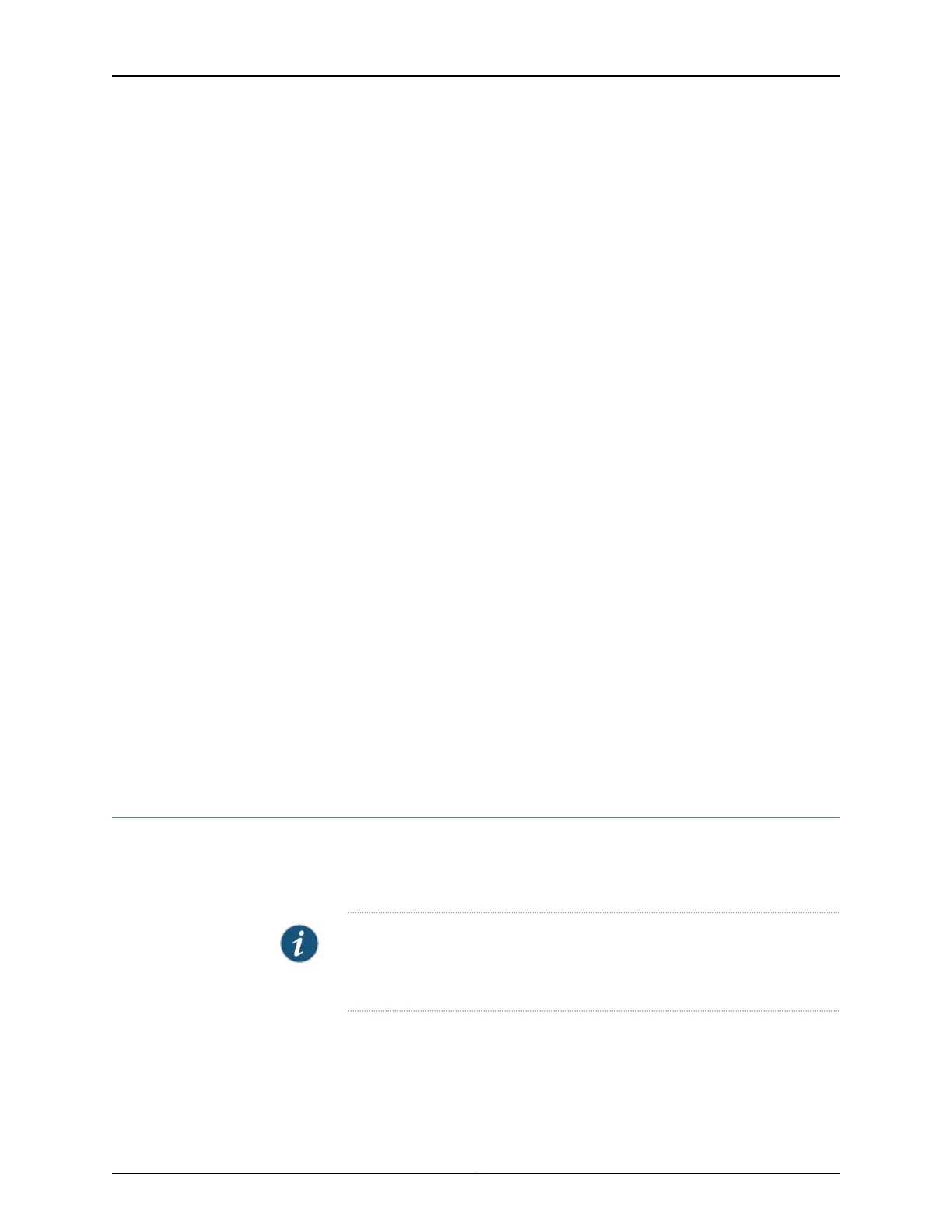To filter unwanted IGMP reports:
1. Configure an IGMPv2 policy.
[edit policy-statement reject_policy_v2]
user@host# set from route-filter 233.252.0.1/32 exact
user@host# set from route-filter 239.0.0.0/8 orlonger
user@host# set then reject
2. Configure an IGMPv3 policy.
[edit policy-statement reject_policy_v3]
user@host# set from route-filter 233.252.0.1/32 exact
user@host# set from route-filter 239.0.0.0/8 orlonger
user@host# set from source-address-filter 10.0.0.0/8 orlonger
user@host# set from source-address-filter 127.0.0.0/8 orlonger
user@host# set then reject
3. Apply the policies to the IGMP interfaces on which you prefer not to receive specific
group or (source, group) reports. In this example, ge-0/0/0.1 is running IGMPv2, and
ge-0/1/1.0 is running IGMPv3.
[edit protocols igmp]
user@host# set interface ge-0/0/0.1 group-policy reject_policy_v2
user@host# set interface ge-0/1/1.0 group-policy reject_policy_v3
4. Verify the operation of the filter by checking the Rejected Report field in the output
of the show igmp statistics command.
Related
Documentation
Understanding IGMP on page 445•
• Example: Configuring Policy Chains and Route Filters
• show igmp statistics
Accepting IGMP Messages from Remote Subnetworks
By default, IGMP interfaces accept IGMP messages only from the same subnet. Including
the promiscuous-mode statement enables the routing device to accept IGMP messages
from indirectly connected subnets.
NOTE: When you enable IGMP on an unnumbered Ethernet interface that
uses a /32 loopback address as a donor address, you must configure IGMP
promiscuous mode to accept the IGMP packets received on this interface.
Copyright © 2017, Juniper Networks, Inc.454
ACX Series Universal Access Router Configuration Guide
